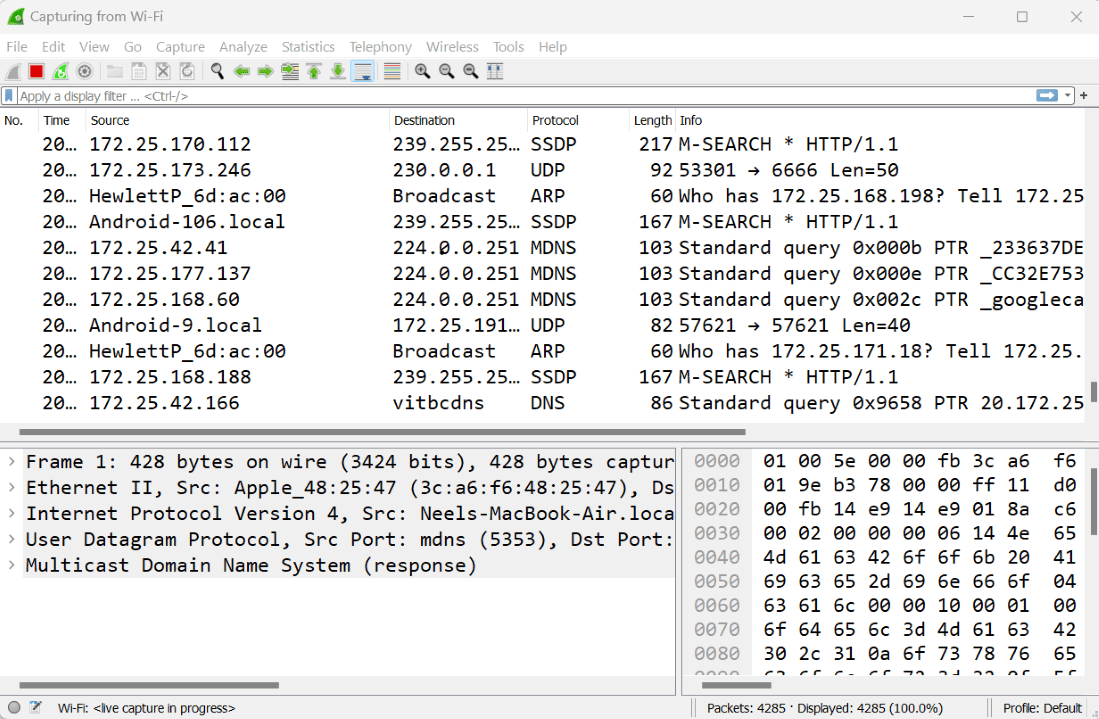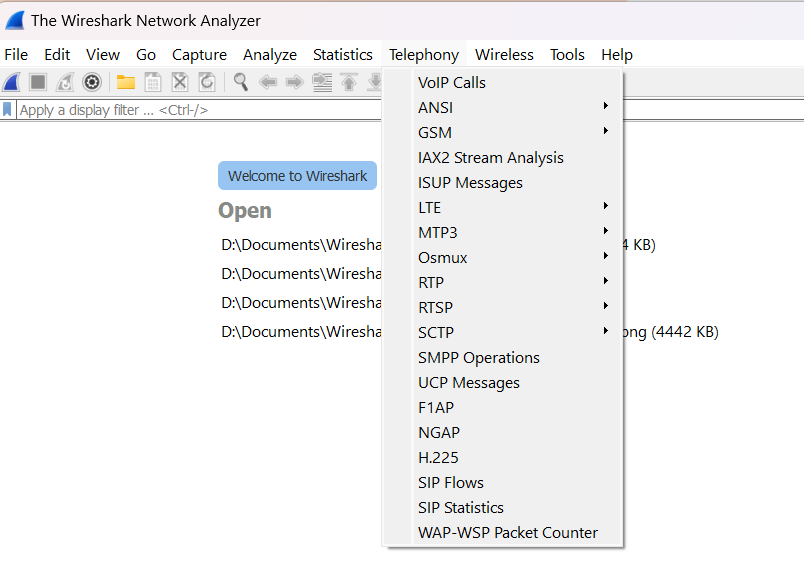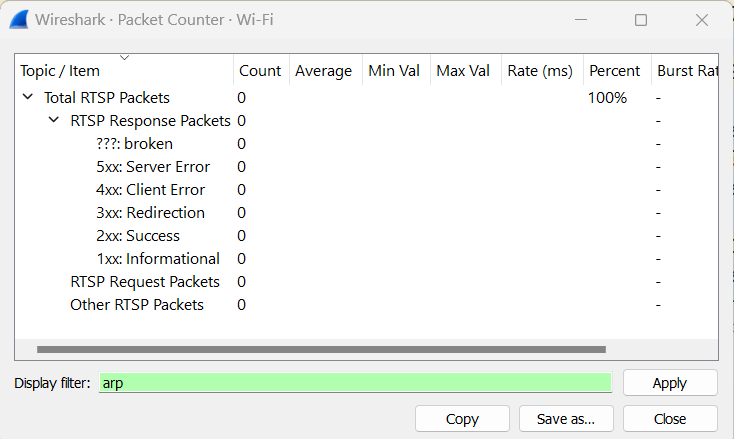Wireshark is a free and open-source packet analysis tool that lets you capture and analyze network traffic in real-time. In this article, we will learn about the Telephony Menu Function in Wireshark. and what are the components used inside the Telephony Menu Function also see the overview of Wireshark.
The Main Window
As you can see in the below image there is a tool menu function, main toolbar function, packet list pane, and packet details pane. present the captured network interface.

Telephony Menu Function
As you can see in the below image the Wireshark menu toolbar Telephony Menu Function have many items to do the different operations.

Telephony
The Telephony menu function allows users to capture and analyze voice and video calls, instant messages, and other telephony-related traffic. this menu contains the items such as RTP, RTSP, SCTP, SMPP operation, etc.
The telephony menu function has many functionalities, it contains many items as you can see in the above image. sub-items of the telephony menu functions such as VoIP Calls, ANSI, GSM, IAX2 Stream Analysis, ISUP Messages, LTE, MTP3, Osmux, RTP, RTSP, SCTP, SMPP Operations, UCP Messages, and H.225 Windwo, and etc.
So here is the description of some main sub-items that are contained by the Telephony Menu Function.
- VoIP Calls: This feature allows you to view all captured VoIP calls in Wireshark’s captured data and provide information about each call, including call source and call group, call duration, codec used, and more.

VoIP Calls Window
The above image shows that when Wireshark captures the wifi it also captured the VoIP Calls and provides all information like start time, from, protocol, duration packet and etc about the captured packet.
- American National Standards Institute (ANSI): This feature shows data statistics groups for mobile communication based on the ETSI GSM standard.
- GSM: The GSM stands for the Global System for Mobile Communications (GSM), a kind of standard network system for mobile.
- IAX2 Stream Analysis: The IAX2 Stream Analysis window displays statistics and forward and backward graphs of selected IAX2 calls.
- ISUP Messages Window: The ISUP stands for the Integrated Service User Part(ISUP) protocol. this feature provides telephone signal communication.
- LTE: This feature is used to Statistics of the captured LTE MAC traffic.
- MTP3 Window: The Message Transfer Part 3 (MTP3) protocol is part of Signaling System 7 (SS7). Trusted by the Public Switched Telephone Network.
- Osmux: This feature is designed to reduce the bandwidth usage of the satellite-based GSM systems voice (RTP-AMR) and signaling traffic. Osmux window is a multiplex protocol.
- RTP: The RTP stands for Real-Time Transport Protocol (RTP) is used to send audio and video on IP networks, and the RTP player in Wireshark lets you play audio and video streams on data captured by Wireshark. RTP contains three sub-item that is the RTP Stream, RTP Stream Analysis, and RTP Player.
- RTSP: The RTSP stands for Real Time Streaming Protocol, this feature is used to check the packet counter window. in the packet counter, you can apply also the filter and count the packet.

- SCTP: The SCTP known as the Stream Control Transmission Protocol, is a computer network protocol that provides communication messages at the transport layer. It overcomes some of the shortcomings of User Datagram Protocol (UDP) and Transmission Control Protocol (TCP). SCTP packet consists of a header and data block.
- SMPP Operation Window: The SMPP Operations window in Wireshark is a display filter that allows you to filter and display SMPP operations exchanged between an SMPP client and an SMPP server during an SMPP session.

- UCP Message: The UCP stands for The Universal Computer Protocol, this feature provides the services to communicate Short Message Service Centre (SMSC).
So these are the main sub-items that contains via Telephony Menu function and provide the different- different functionality also there are some other sub-items.
So in general the Telephony Menu function provides many functions which help to identify and troubleshoot VoIP and other telephony protocols, making it useful for network administrators, VoIP engineers, and other professionals working with telephony equipment.




